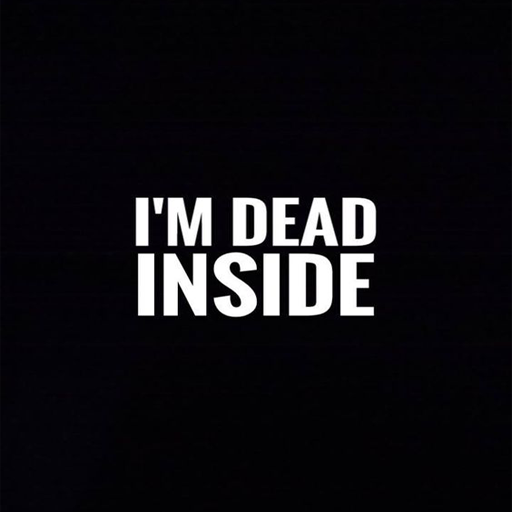#mymentalhealthmatters
“There’s this season in my life where I felt so depressed.” I bet you’ve heard this line before from so many people. Unfortunately for us this is one disorder that does not discriminate. Whether you are a millennial, gen z, boomer or whatever generation, you are still prone to it. Welcome back Millenial Readers, today let’s talk about depression.

Depression (major depressive disorder) is a common and serious medical illness that negatively affects how you feel, the way you think and how you act. Fortunately, it is also treatable. Depression causes feelings of sadness and/or a loss of interest in activities you once enjoyed.
We can say it’s a mood disorder that you simply can’t snap out of. You need help and support from professionals, family and friends in order to deal with the disorder. It can lead to a variety of emotional and physical problems and can decrease your ability to function at work and at home.
What are The General Signs and Symptoms of Depression?
- Feeling sad or having a depressed mood.
- Loss of interest or pleasure in activities once enjoyed.
- Changes in appetite — weight loss or gain unrelated to dieting.
- Trouble sleeping or sleeping too much.
- Loss of energy or increased fatigue.
- Increase in purposeless physical activity (e.g., inability to sit still, pacing, handwringing) or slowed movements or speech (these actions must be severe enough to be observable by others).
- Feeling worthless or guilty.
- Difficulty thinking, concentrating or making decisions.
- Thoughts of death or suicide.
- Symptoms must last at least two weeks and must represent a change in your previous level of functioning for a diagnosis of depression.
What are The General Causes of Depression?

Several factors can play a role in depression:
- Biochemistry: Differences in certain chemicals in the brain may contribute to symptoms of depression.
- Genetics: Depression can run in families. For example, if one identical twin has depression, the other has a 70 percent chance of having the illness sometime in life.
- Personality: People with low self-esteem, who are easily overwhelmed by stress, or who are generally pessimistic appear to be more likely to experience depression.
- Environmental factors: Continuous exposure to violence, neglect, abuse or poverty may make some people more vulnerable to depression.
What is The Classification of Depression?
Depression affects an estimated one in 15 adults (6.7%) in any given year. And one in six people (16.6%) will experience depression at some time in their life. Depression can occur at any time, but on average, first appears during the late teens to mid-20s. Women are more likely than men to experience depression. Some studies show that one-third of women will experience a major depressive episode in their lifetime. There is a high degree of heritability (approximately 40%) when first-degree relatives (parents/children/siblings) have depression.

The classification of depression include;
- Mild depression – A person with mild depression will have a low mood and other symptoms of depression, but the symptoms will be less intense.
- Mild to moderate depression – According to the American Psychiatric Association (APA), the symptoms of mild to moderate depression are similar to those of severe depression but less intense.
- Moderate to severe depression -form of depression where many of the physical symptoms of depression are present. One of the major changes is that the person starts to move more slowly.
What are The Types of Depression?
Here are some common types of depression. Symptoms can vary from mild to severe in any type;

- Persistent depressive disorder (dysthymia)
Symptoms last at least 2 years. At times, symptoms may be mild, but the person may also experience severe symptoms that indicate major depression.
- Seasonal affective disorder
Seasonal affective disorder (SAD) may happen during the shorter days of fall and winter. A lack of sunlight and changing sleep patterns may contribute. The person may withdraw socially, put on weight, and sleep more in the winter.
- Perinatal and postpartum depression
Symptoms can occur during and after pregnancy. Unlike the “baby blues,” this can last for weeks, months, or years.
Postpartum depression involves extreme sadness, anxiety, and fatigue, making it hard for the new parent to take care of their infant.
- Bipolar depression
A person with bipolar disorder experiences changes in mood. They may have symptoms of depression before or after an elevated mood, during which they will experience high energy and activity.
- Premenstrual dysphoric disorder
This is similar to premenstrual syndrome (PMS) but more severe. Symptoms include severe irritability, anxiety, and depression that last from 1–2 weeksTrusted Source before until 2–3 days after menstruation starts.
What Is The Difference Between Depression and Grief?
Grief and depression can co-exist. For some people, the death of a loved one, losing a job or being a victim of a physical assault or a major disaster can lead to depression. When grief and depression co-occur, the grief is more severe and lasts longer than grief without depression.
Distinguishing between grief and depression is important and can assist people in getting the help, support or treatment.

What about Treatment?
Depression is among the most treatable of mental disorders. Between 80% and 90% percent of people with depression eventually respond well to treatment. Almost all patients gain some relief from their symptoms.
So yes people! Don’t fret because depression is very treatable!
That’s all we had for today. I look forward to reading your comments and sharing your thoughts on this disorder. Let me know in the comment section below.
Noanne 😊😊😊
#mymentalhealthmatters
#mentalhealthawarenessmonth
#themillenialnews

